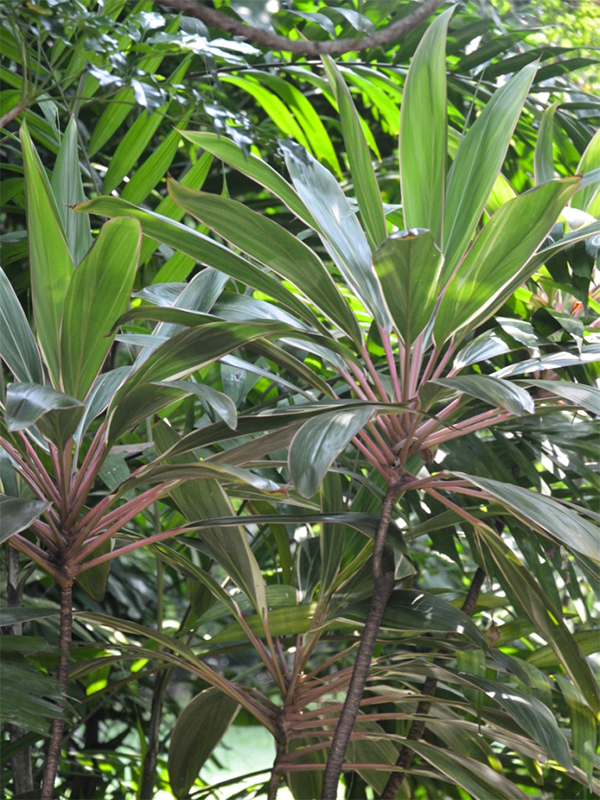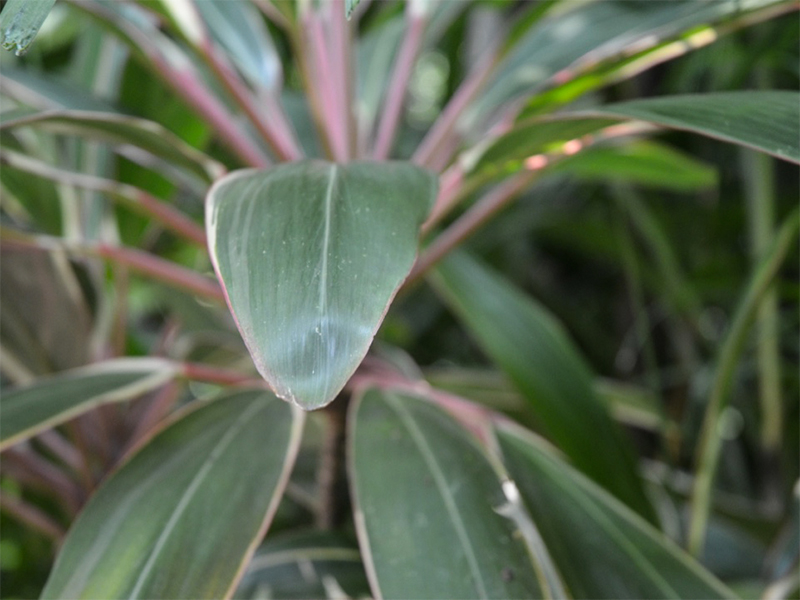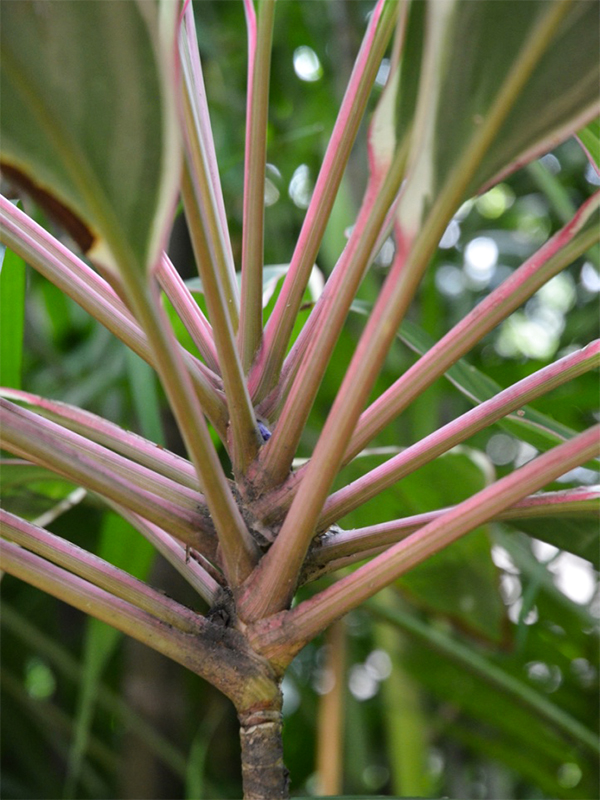| ID Characteristic | Grown for distinct foliage, with the new leaves emerging as a bright pinkish-red. |
| Landscape | Best suited for houseplant use. |
| Propagation | By stem sections. |
| Cultivation | Part to full shade in a well-drained, peaty potting mixture. Needs consistently moist soil during the active growing season, water sparingly during the winter. |
| Pests | Aphids, scale, spider mites and mealybugs. |
| Notable Specimens | Suan Packkad Palace, Bangkok, Thailand. |
| Leaf Description | Stiletto shaped leaves grow up to 76 cm long and 15 cm wide. |
| Flower Description | Showy, fragrant and grow at the end of 30 cm long panicles. |
| Colour Description | Flowers range from white to pink to pale lavender. When leaves first emerge they are pinkish red, but mature to deep green. Berries are red. |


